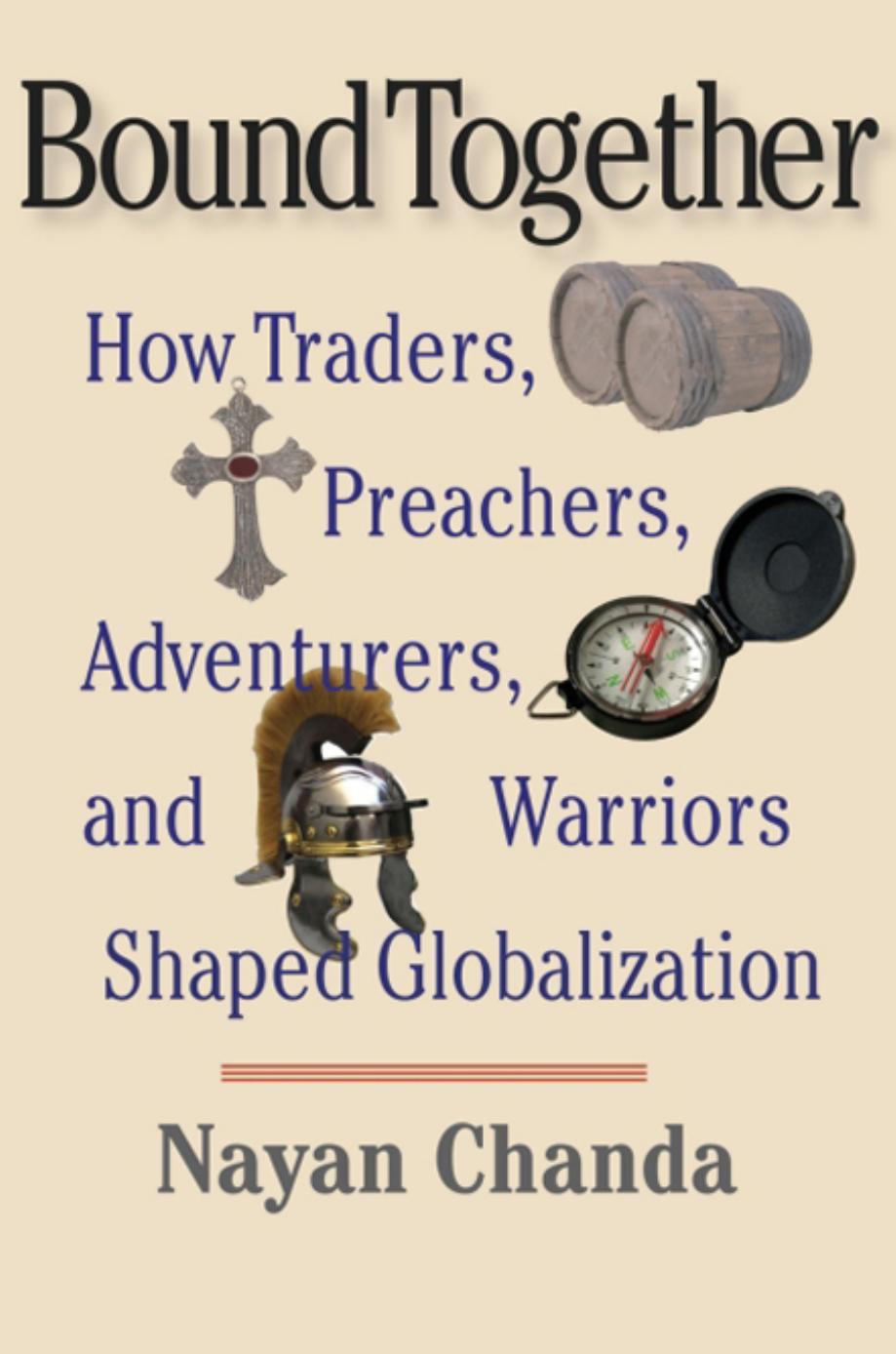Bound Together : How Traders, Preachers, Adventurers, and Warriors Shaped Globalization by Nayan Chanda

Author:Nayan Chanda [Chanda, Nayan]
Language: eng
Format: epub, pdf
Published: 2011-01-21T06:45:44.531000+00:00
195
Bactria, eastern Iran, and Central Asia all became Buddhist and provided a pathway for the religion to reach China, which it did in the first century ce.62
The Roman emperor Constantine played a role, not unlike that of Asóka, in promoting the diffusion of Christianity. After years of persecuting the Christians, Constantine converted in 312 to the faith propagated by Jesus, dramatically turning the religion’s fortunes. Constantine diverted the massive state resources that had been lavished on pagan temples to Christianity, making it “the most-favored recipient of the near-limitless resources of imperial favor.”63 In 325 he and the pope convened a gathering of around three hundred bishops from all the corners of the empire. Clad in gold and sitting on a gold throne, Constantine presided over the first Council of Nicaea, marking the imperial launch of the church.64 A historian summed up the result of Constantine’s conversion: “A clergy recruited from the people and modestly sustained by member contributions suddenly gained immense power, status, and wealth as part of the imperial civil service.”65
After the fall of Rome, the church had to revive its missionary spirit to dispatch monks to preach in non-Christian territories. An early success came in the late fifth century, when the great Frankish king Clovis converted to Christianity and immediately baptized three thousand of his armed followers. The Christianizing mission was carried out with zeal by Clovis’s successors, so much so that Charlemagne was crowned Holy Roman Emperor by the pope in 800.
Charlemagne took both his title and task seriously and sought the immediate conversion of all territories he conquered. As one historian notes, “Each victory was followed by forced mass baptisms, and thousands of captives who showed reluctance were beheaded.”66 Nearly 730 years later, in 1532, Spanish conquistadors subjugated native peoples in South America in the name of Christ. In one celebrated event, Francisco Pizarro killed two thousand Incas and took their emperor to protect Christian honor.67 Violent conversion of native peoples continued, and despite a papal injunction against abusing natives, the Spaniards carried on destroying their temples and building churches in their stead. Backed by economic and military power, Portuguese and French colonial rulers, too, continued converting native peoples throughout their domains.
Portugal claimed to have converted some 1.2 million people to Christianity from Mozambique to Japan.68
Even the British commercial empire took on religious duty as a Christian nation. As Niall Ferguson notes, “The English sense of empire envy only grew more acute after the Reformation, when proponents of war against Catholic Spain began to argue that England had a religious duty to build a Protestant 196
The Imperial Weave
empire to match the ‘Popish’ empires of the Spanish and Portuguese.”69 The British took care to place Christian evangelists in the highest positions of government in India, including at all levels of the army. With aid from London, missionaries ran almost half of all the subcontinent’s schools.
The short-lived American colonial venture in Asia also promoted Christianity in the region. The U.S. seizure of the Philippines from the defeated Spaniards was justified as a civilizing mission thrust on the nation.
Download
Bound Together : How Traders, Preachers, Adventurers, and Warriors Shaped Globalization by Nayan Chanda.pdf
This site does not store any files on its server. We only index and link to content provided by other sites. Please contact the content providers to delete copyright contents if any and email us, we'll remove relevant links or contents immediately.
| Books & Reading | Comparative Literature |
| Criticism & Theory | Genres & Styles |
| Movements & Periods | Reference |
| Regional & Cultural | Women Authors |
4 3 2 1: A Novel by Paul Auster(12286)
The handmaid's tale by Margaret Atwood(7680)
Giovanni's Room by James Baldwin(7193)
Asking the Right Questions: A Guide to Critical Thinking by M. Neil Browne & Stuart M. Keeley(5644)
Big Magic: Creative Living Beyond Fear by Elizabeth Gilbert(5614)
Ego Is the Enemy by Ryan Holiday(5294)
The Body: A Guide for Occupants by Bill Bryson(4975)
On Writing A Memoir of the Craft by Stephen King(4863)
Ken Follett - World without end by Ken Follett(4646)
Adulting by Kelly Williams Brown(4487)
Bluets by Maggie Nelson(4474)
Eat That Frog! by Brian Tracy(4436)
Guilty Pleasures by Laurell K Hamilton(4362)
The Poetry of Pablo Neruda by Pablo Neruda(4041)
Alive: The Story of the Andes Survivors by Piers Paul Read(3969)
White Noise - A Novel by Don DeLillo(3954)
Fingerprints of the Gods by Graham Hancock(3942)
The Book of Joy by Dalai Lama(3903)
The Bookshop by Penelope Fitzgerald(3777)
